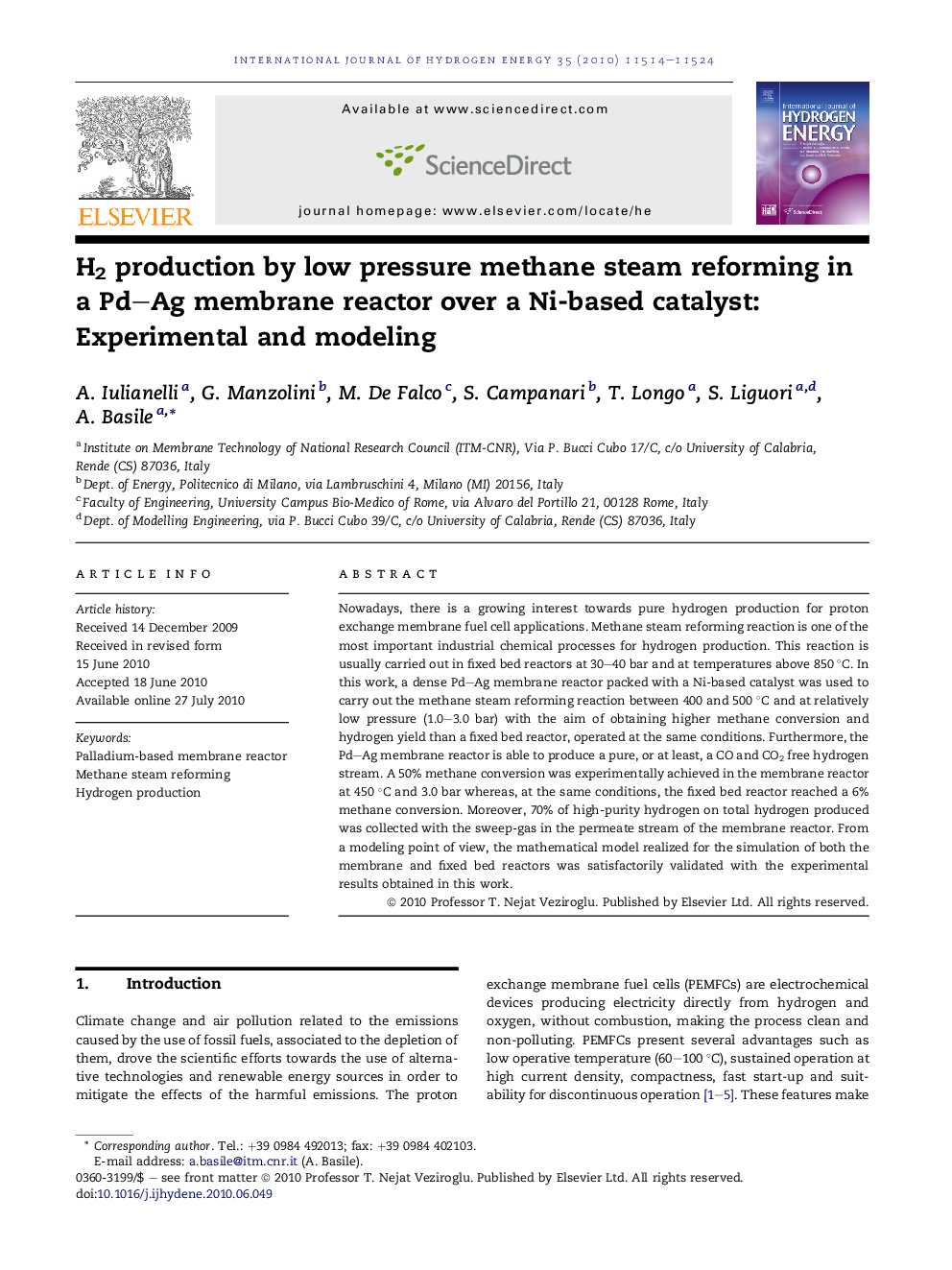| Article ID | Journal | Published Year | Pages | File Type |
|---|---|---|---|---|
| 1276754 | International Journal of Hydrogen Energy | 2010 | 11 Pages |
Nowadays, there is a growing interest towards pure hydrogen production for proton exchange membrane fuel cell applications. Methane steam reforming reaction is one of the most important industrial chemical processes for hydrogen production. This reaction is usually carried out in fixed bed reactors at 30–40 bar and at temperatures above 850 °C. In this work, a dense Pd–Ag membrane reactor packed with a Ni-based catalyst was used to carry out the methane steam reforming reaction between 400 and 500 °C and at relatively low pressure (1.0–3.0 bar) with the aim of obtaining higher methane conversion and hydrogen yield than a fixed bed reactor, operated at the same conditions. Furthermore, the Pd–Ag membrane reactor is able to produce a pure, or at least, a CO and CO2 free hydrogen stream. A 50% methane conversion was experimentally achieved in the membrane reactor at 450 °C and 3.0 bar whereas, at the same conditions, the fixed bed reactor reached a 6% methane conversion. Moreover, 70% of high-purity hydrogen on total hydrogen produced was collected with the sweep-gas in the permeate stream of the membrane reactor. From a modeling point of view, the mathematical model realized for the simulation of both the membrane and fixed bed reactors was satisfactorily validated with the experimental results obtained in this work.
